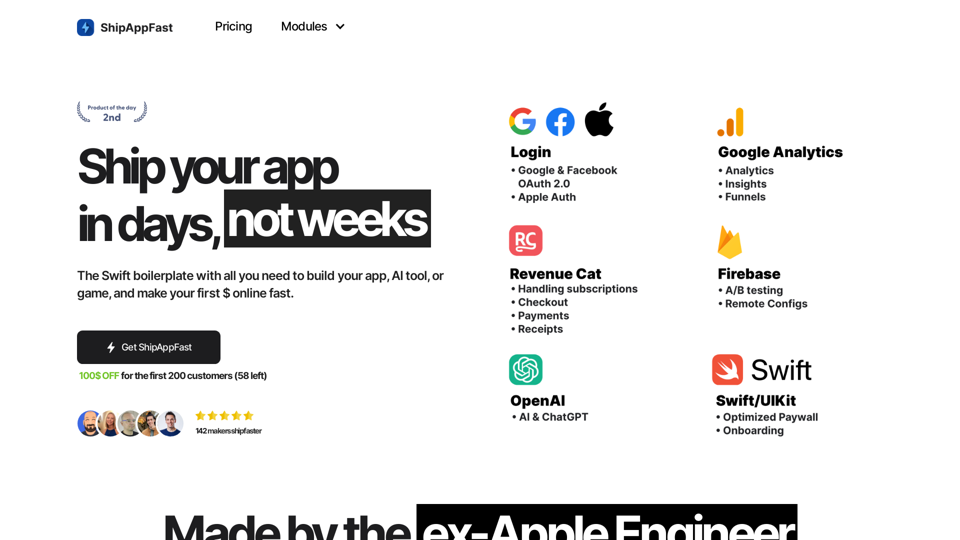Ai Club is a browser extension that provides quick access to leading artificial intelligence platforms. It serves as a centralized hub for AI enthusiasts, offering convenient navigation through various AI tools. With Ai Club, users can easily access popular platforms like ChatGPT, Grok, Claude, Copilot, and Gemini, making it an invaluable resource for exploring AI capabilities.
Ai Club
This extension acts as a container, giving you quick access to 5 of the top artificial intelligence platforms with a single click.
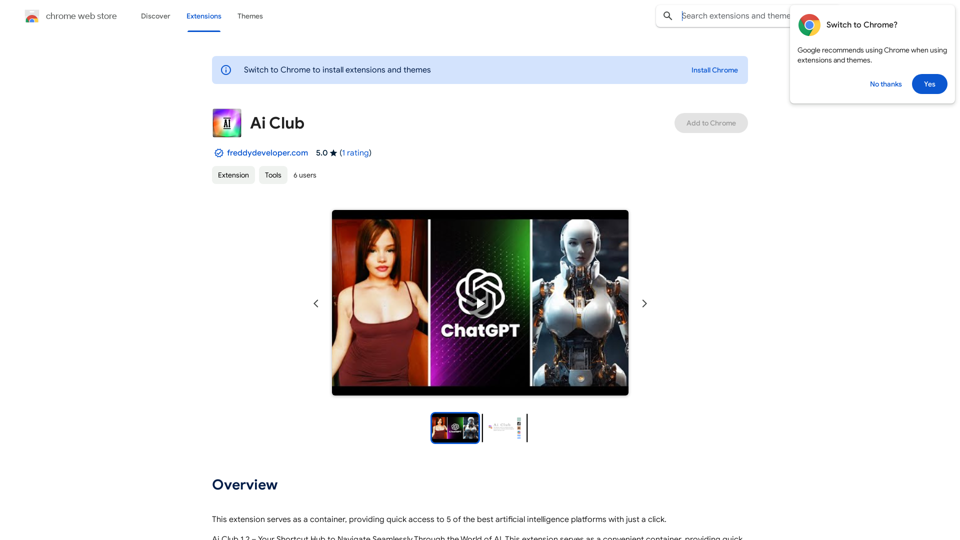
Introduction
Feature
Quick Access to AI Platforms
Ai Club offers instant access to top AI platforms, allowing users to explore and utilize their capabilities effortlessly.
Centralized AI Hub
The extension functions as a container, providing a unified interface for accessing multiple AI tools and resources.
Integration with Popular AI Services
Ai Club seamlessly integrates with various AI platforms, including:
- ChatGPT
- Grok
- Claude
- Copilot
- Gemini
User-Friendly Installation
Users can easily install Ai Club from the Chrome Web Store, making it accessible to a wide range of users.
Free Access
Ai Club is a free extension, offering unlimited access to the best AI platforms without any cost to the user.
Customizable Experience
Users can tailor their experience by adjusting the extension's settings to suit their specific needs and preferences.
FAQ
Is Ai Club free to use?
Yes, Ai Club is a free browser extension that offers unlimited access to various AI platforms. However, some individual AI services may have their own pricing models or usage limitations.
What AI platforms are available through Ai Club?
Ai Club integrates with several popular AI platforms, including:
- ChatGPT
- Grok
- Claude
- Copilot
- Gemini
How do I install and use Ai Club?
To install and use Ai Club:
- Visit the Chrome Web Store and install the Ai Club extension
- Click on the Ai Club icon in your browser toolbar to access the extension
- Explore the various AI platforms and tools available within the extension
Latest Traffic Insights
Monthly Visits
193.90 M
Bounce Rate
56.27%
Pages Per Visit
2.71
Time on Site(s)
115.91
Global Rank
-
Country Rank
-
Recent Visits
Traffic Sources
- Social Media:0.48%
- Paid Referrals:0.55%
- Email:0.15%
- Referrals:12.81%
- Search Engines:16.21%
- Direct:69.81%
Related Websites
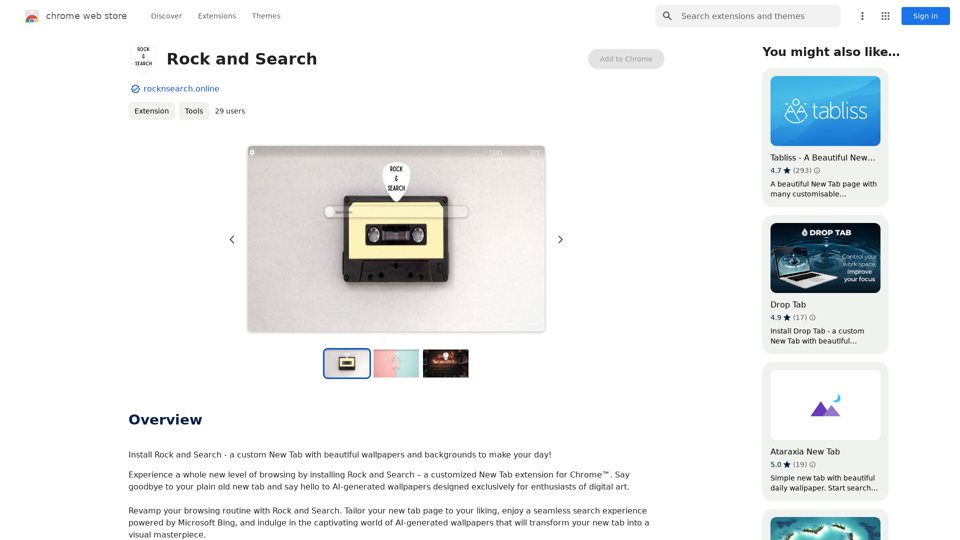
Install Rock and Search - a custom New Tab with beautiful wallpapers and backgrounds to brighten your day!
193.90 M
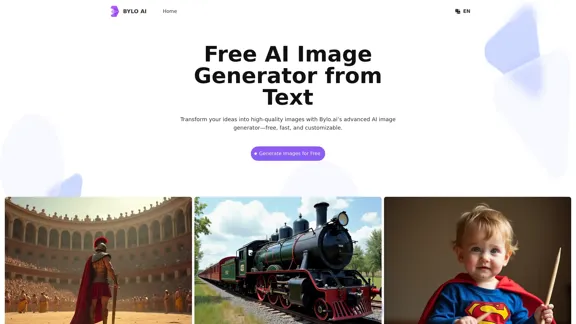
Bylo.ai: The Best Free AI Image Generator for Converting Text to Images
Bylo.ai: The Best Free AI Image Generator for Converting Text to ImagesBylo.ai is the best free AI image generator online that transforms text into stunning visuals. With advanced features like negative prompts and the Flux AI image generator, customize settings to create professional-quality images quickly.
1.57 M

Kolors Virtual Try On AI: Free Tool for Stunning Virtual
Kolors Virtual Try On AI: Free Tool for Stunning VirtualExperience Kolors Virtual Try On AI: effortlessly try various makeup looks and hairstyles in real-time, ensuring the perfect style for you
0
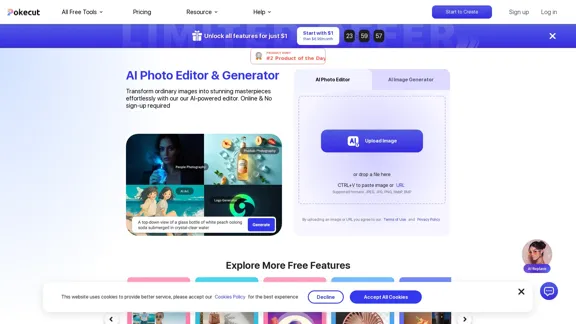
Free AI Photo Editor: Edit and Create Images Online
Free AI Photo Editor: Edit and Create Images OnlinePokecut is an AI-powered photo editor that transforms ordinary images into stunning masterpieces effortlessly. Remove backgrounds, enhance photos, and generate images online without signing up.
772.96 K
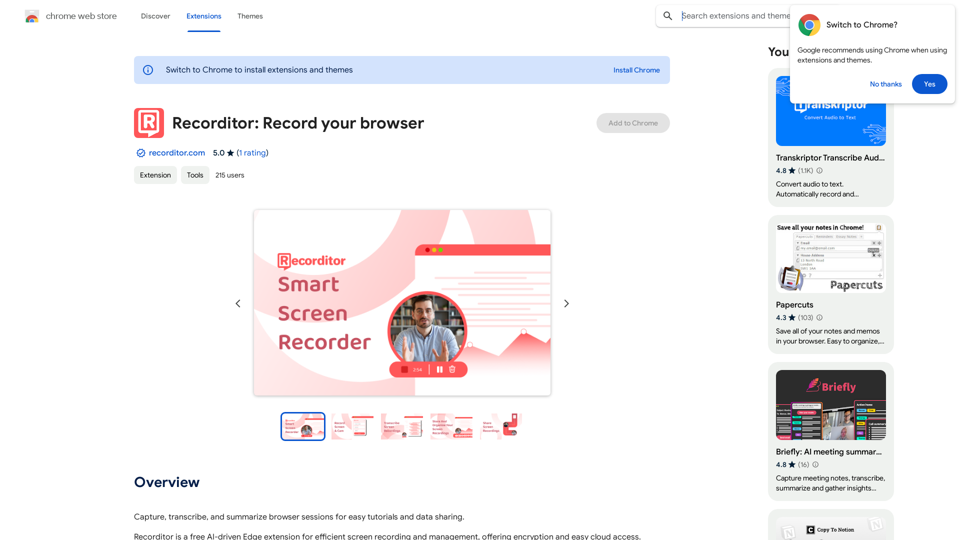
Record, write down, and shorten web browser activities for simple how-to guides and sharing information.
193.90 M


